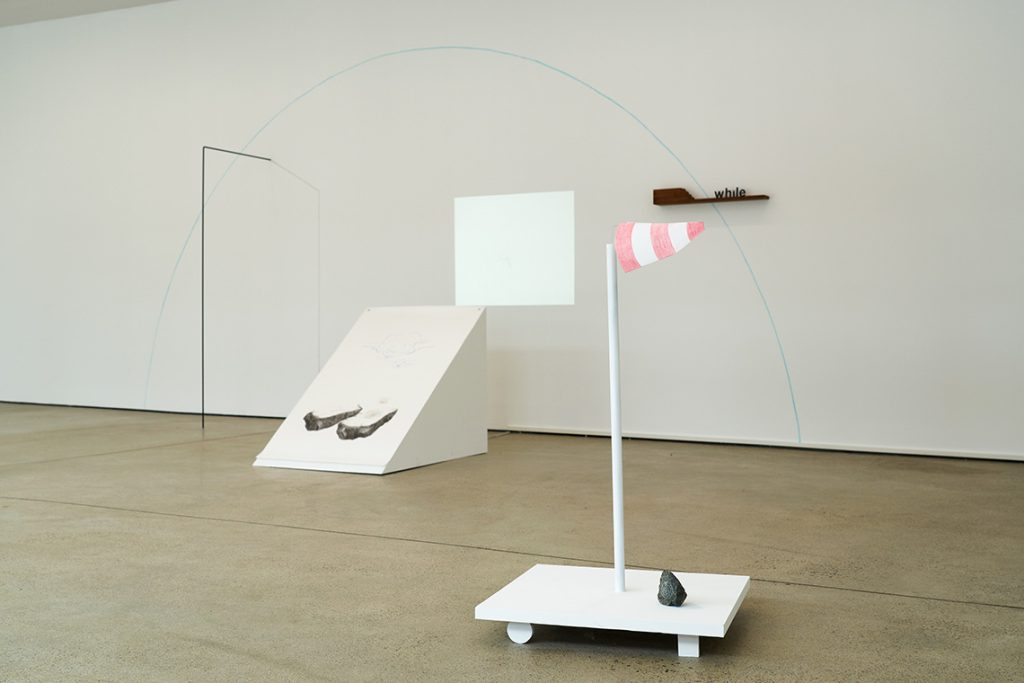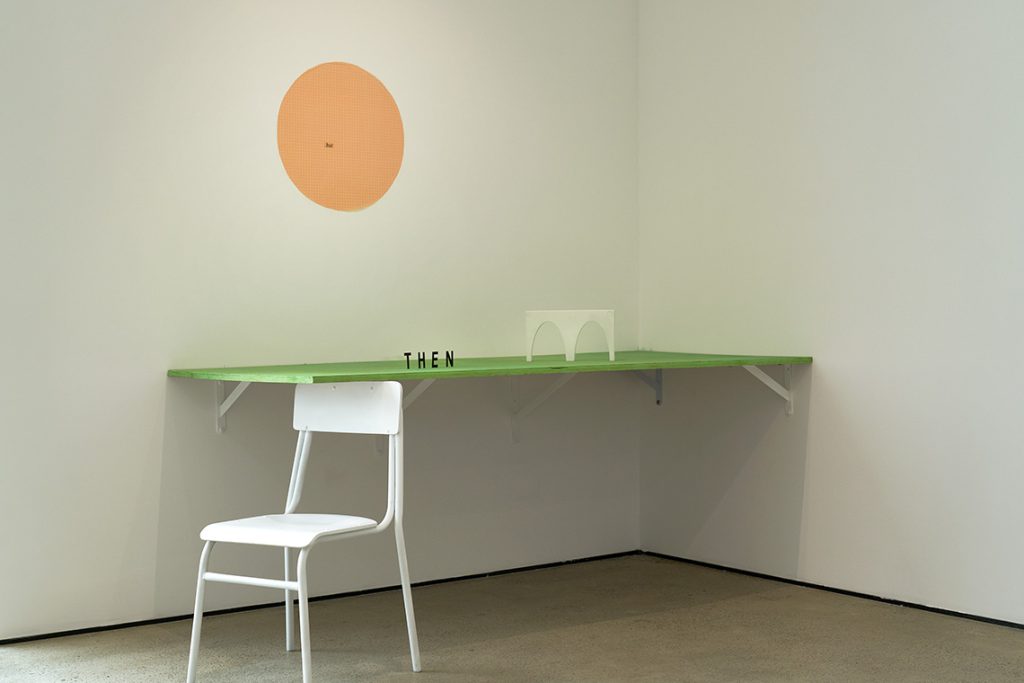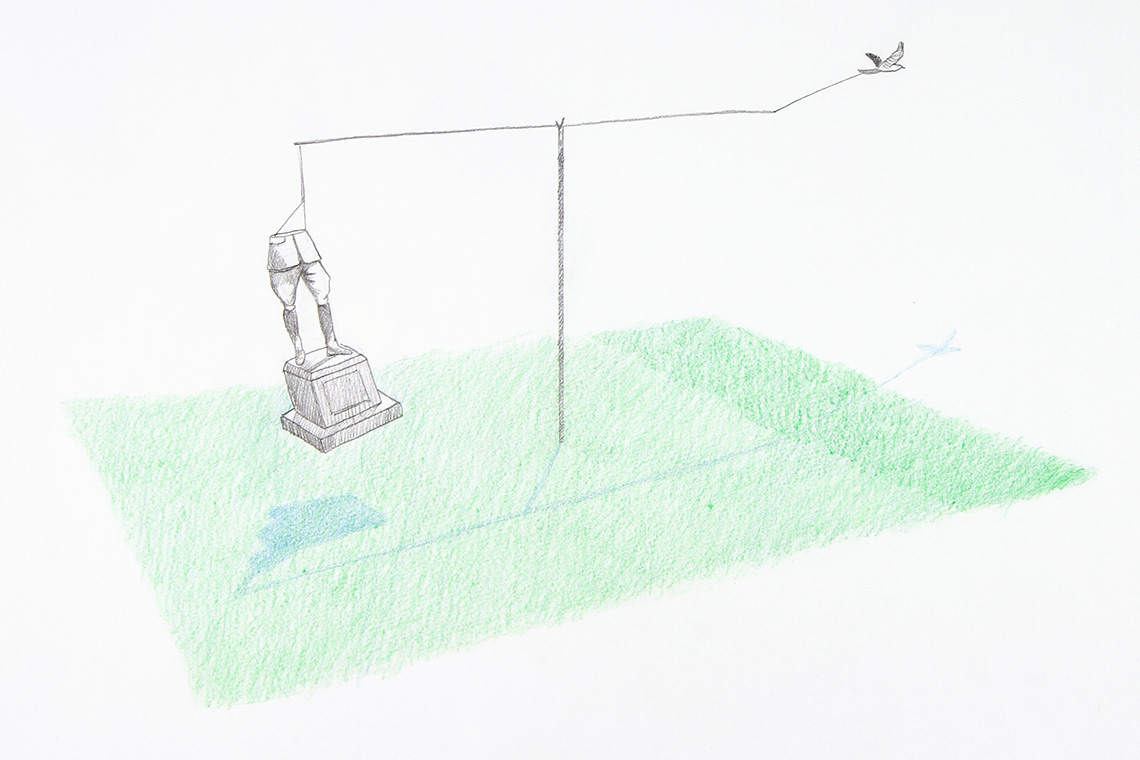Massinissa Selmani’s current exhibition explores ambiguity and fragility through minimalist, surreal forms that evoke meaning without declaring it.
Massinissa Selmani’s show, distances, at Aranya Art Centre North marks the artist’s inaugural solo presentation in China and forms part of a quartet of new exhibitions synchronised with the broader rhythms of the Gallery Weekend Beijing programme. Selmani’s distinctive surrealist vernacular finds a resonant echo in the singular atmosphere of the Aranya Art Centre (AAC) – an architectural and cultural landmark situated within the contemplative area of Aranya, an enclaved coastal resort in Beidaihe. Once a destination for the élite in the 1980s and, prior to that, a coastal retreat fashioned by foreign merchants and diplomats in the late nineteenth century, the site bears sedimented histories that accumulate in a parallel manner across time.
Beidaihe’s layered chronotope – a simultaneity of historical moments rather than linear archaeological strata – generates a poignant backdrop for Selmani’s oblique, poetic enquiries. The locale is less a singular destination than an overlapping constellation of temporalities. The colonial villa compound, the leisure site popularised by retirees and the contemporary curated community all interweave to form a quasi-utopian society. In this gently estranged space, Selmani exhibits eight works, two of which were commissioned specifically by AAC and all of which coalesce around his ongoing exploration of the ‘leave blank’ aesthetic – a conceptual approach that chimes with the Chinese artistic tradition of liubai.
In traditional Chinese ink painting, liubai – the act of deliberately leaving voids or absences – is a gesture that invites the unsaid to speak, the invisible to articulate. Although Selmani’s drawings may not consciously cite this reference, the expansive negative spaces within his compositions activate a similar kind of cognitive resonance. Charged with potentiality, these lacunae allow viewers to complete, project or misrecognise in a process as much about the interior as the external world.

The exhibition opens with a newly commissioned work, Untitled (2025): a traffic cone, rendered in red and white stripes, has been transfigured into a makeshift flag. It stands atop a white pedestal, tethered to a similarly white pole, while a carved black stone anchors the composition. An emblem of bureaucratic control and obstruction is thus elevated into a symbol of authority, only to be undercut by its small scale and almost absurdist construction. The object provokes between solemnity and whimsy, evoking a simultaneously childlike and satirical aesthetic vocabulary.
Adjacent to it, the looped animation La place et le lieu (2022) further elaborates Selmani’s engagement with dialectics of weight and levity. A scale composed of a pole planted in a mint-green lawn holds, on one side, the truncated base of a historical monument; on the other, a bird suspended in mid-flight. The mise-en-scène is deceptively pastoral, its colours gentle, its motion lyrical – yet beneath the surface lies a fraught allegory. The gravitational pull of the monument speaks to the burden of history and of inherited memory. In contrast, the bird’s Sisyphean fluttering suggests a perpetual (and perhaps futile) aspiration toward transcendence. Here, the past is not merely remembered; it is actively resisted, negotiated and occasionally mocked. The animation is projected directly onto a white wall, creating a subtle interplay between image and architecture. The lit area of the projection forms a visual threshold, while the surrounding blankness reinforces the existential modesty of the subject: a flickering gesture within an expansive void. The motif of the ‘small against the vast’ recurs throughout the exhibition, inviting reflections on the fragility of subjectivity within larger systems of power and meaning.
The most expansive work in the exhibition – and perhaps among the most ambitious in Selmani’s oeuvre – is L’Immensité de l’instant (2023), an immersive installation that erupts from two-dimensional space into sculptural complexity. A semicircular arch, drawn in green pastel, gestures toward both rainbow and architectural vault. Off-centre, a bird in flight is again projected, this time framed by the word ‘while’ incised into the wall — an enigmatic temporal conjunction that suspends causality and invites speculative interpretation. An L-shaped black metal rod emerges from the left, bridging wall and floor to form an almost calligraphic punctuation. At the base lies a sloped pedestal supporting a drawing of a bifurcated stone – perhaps a metaphorical geode, split open to reveal hidden strata. The overall composition resists semantic closure. Rather, it unfolds as a dramaturgy of fragments: a theatre in which disparate elements — bird, stone, text, rod — cohabit a shared visual field without resolving into narrative.

Opposite this work is But, then (2025), a companion piece that echoes both formally and conceptually. Here the words ‘but’ and ‘then’ are spatially isolated, the former printed within an orange circle, the latter standing on its own weight on a green platform beside an M-shaped white arch. These syntactical elements – conjunctions and adverbs – function as linguistic thresholds. Selmani employs such elements throughout the exhibition, his manipulation of language situating the viewer in a condition of interpretive ambiguity. The artist’s syntax is architectural and performative; it builds structures of delay and sites of deferred meaning. The audience becomes, in effect, both interpreter and conspirator – complicit in the work’s elliptical choreography.
A psychogeographical map drawn not in certainties but in conditionalities, Selmani’s practice is marked by a philosophical lightness, a humour tempered by melancholy and an enduring fascination with the fragment. His works unfold as temporal artefacts of suspension, not narrating so much as insinuating. They do not declare, but rather evoke. Like conjunctions between unseen clauses, they reside in the interstitial, offering a mode of resistance against the tyranny of fixed meaning. In a time increasingly dominated by assertive narratives and totalising images, Selmani’s art insists on something quieter and more radical: the dignity of uncertainty, the eloquence of the unfinished and the political charge of pause.



